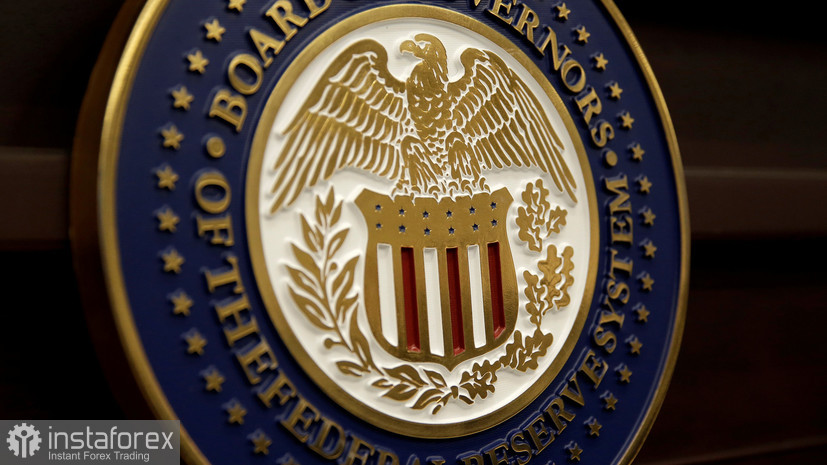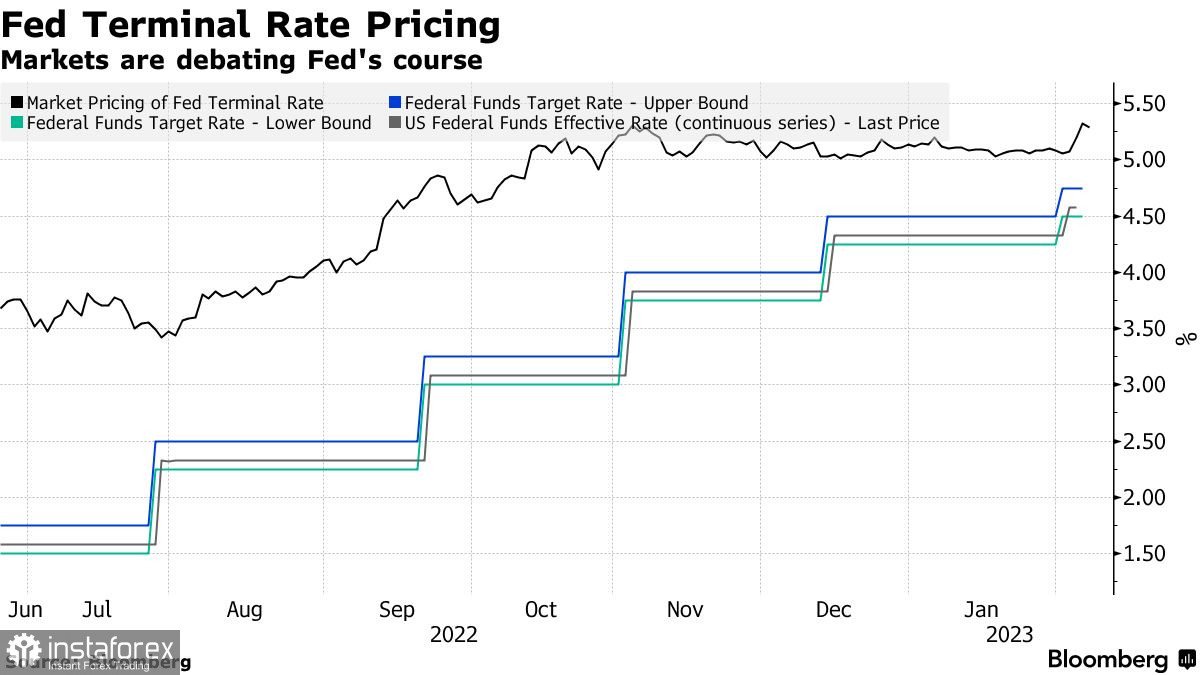Market participants are waiting for another speech by Fed Chair Jerome Powell, especially his comments on the recent labor market report. Federal Reserve Bank of Atlanta President Raphael Bostic said yesterday that a strong January jobs report raised the possibility that the central bank would have to lift interest rates higher than previously anticipated.
If the economy keeps growing, "It'll probably mean we have to do a little more work," Bostic said. "And I would expect that that would translate into us raising interest rates more than I have projected right now."

According to Bostic, his base case remains for rates to reach 5.1%, in line with the median of policymakers' December forecasts, and stay there throughout 2024. A higher peak could be reached through an additional quarter-point hike beyond the two currently envisioned.
Notably, the latest GDP data for the 4th quarter turned out to be well above economists' forecasts and was revised upwards. This allows policymakers to believe that the US economy is relatively strong. Thus, it will be able to survive much higher interest rates than the current ones. This is necessary in order to quickly bring inflation back to the Fed's target of 2.0%. After that, it will be possible to start cutting rates and pumping up the economy with cheap money, developing business, investments, and companies.
In January, the economy added 517,000 new jobs, and the unemployment rate dropped to 3.4%, the lowest level since May 1969. Last week, the Federal Open Market Committee raised the short-term federal funds rate by 25 basis points, or 0.25%, to a target range of 4.50% to 4.75%. This move was taken immediately following the December meeting, when the rate was raised by only 0.5%, after four aggressive hikes by 75 basis points before.
Raphael Bostic also said that officials needed to understand whether the jobs report was "anomalous" or not. The committee could consider returning to the 50 basis-point increase if necessary. The president of the Federal Reserve Bank of Atlanta did not rule out that economic figures for the next quarter could be stronger than expected, adding that the focus was on an imbalance of supply and demand.
According to Fed Chairman Jerome Powell, policymakers expect to deliver a couple more interest rate increases before putting their aggressive tightening campaign on hold. He also warned that in order to further ease price pressures, the labor market would have to suffer a bit.

From a technical point of view, the EUR/USD pair is trading under strong downward pressure. Nobody believes that the European Central Bank will keep its monetary policy tight. To halt the slide, the price needs to consolidate above 1.0720. In this case, the pair will most likely rise to the 1.0770 area. A breakout of this level will make it possible to climb to 1.0800 and then 1.0830. If the price breaks through the support level of 1.0720, the volume of short positions will increase further. Thus, the EUR/USD pair will dip to 1.0680 and probably the low of 1.0650.
As for the GBP/USD pair, after two days of losses, it entered a sideways range. To regain control of the market, buyers need to push the price above 1.2070. If the price breaks through this resistance level, the pair will be able to recover to the 1.2140 area. In this case, the British pound may extend gains, heading for the 1.2200 area. Alternatively, the trading instrument will come under pressure again if bears take control of 1.2010. This will bring the GBP/USD pair back to the levels of 1.1950 and 1.1880.
 English
English 
 Русский
Русский Bahasa Indonesia
Bahasa Indonesia Bahasa Malay
Bahasa Malay ไทย
ไทย Español
Español Deutsch
Deutsch Български
Български Français
Français Tiếng Việt
Tiếng Việt 中文
中文 বাংলা
বাংলা हिन्दी
हिन्दी Čeština
Čeština Українська
Українська Română
Română

